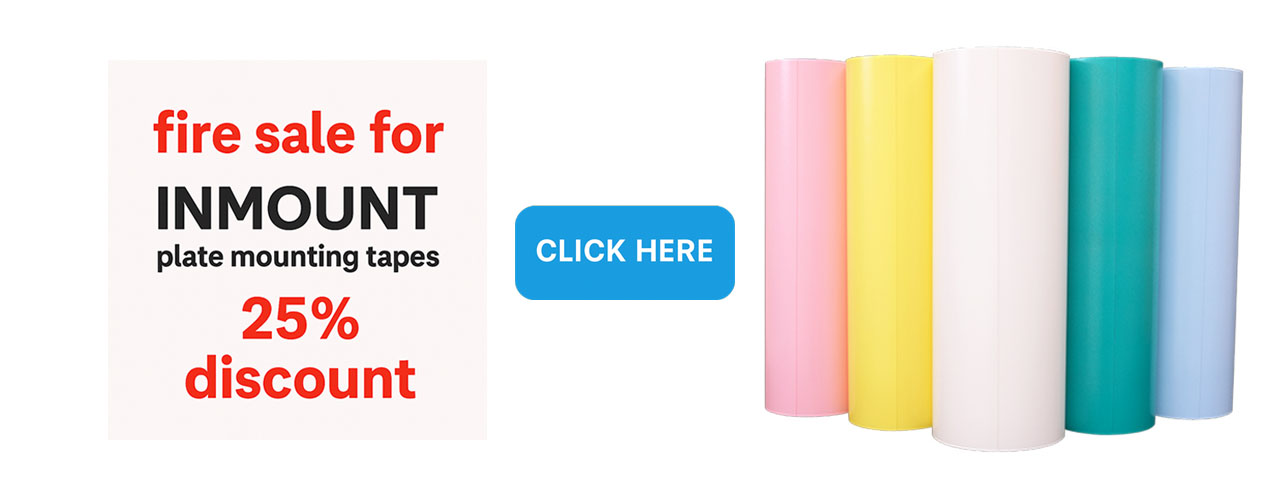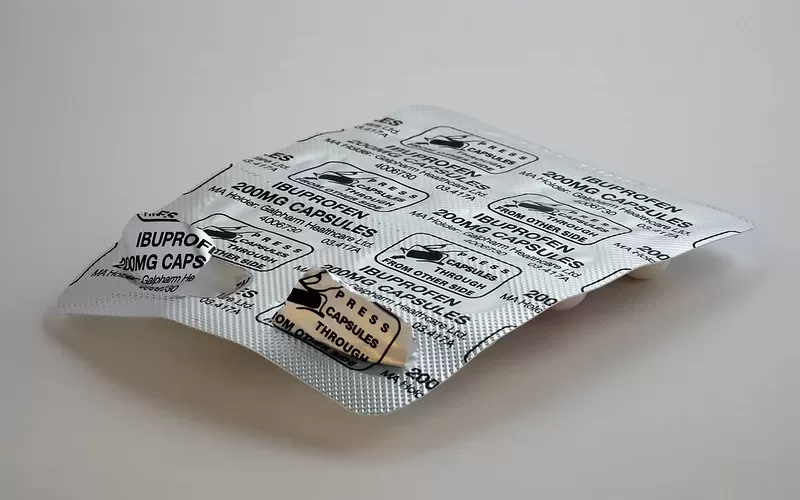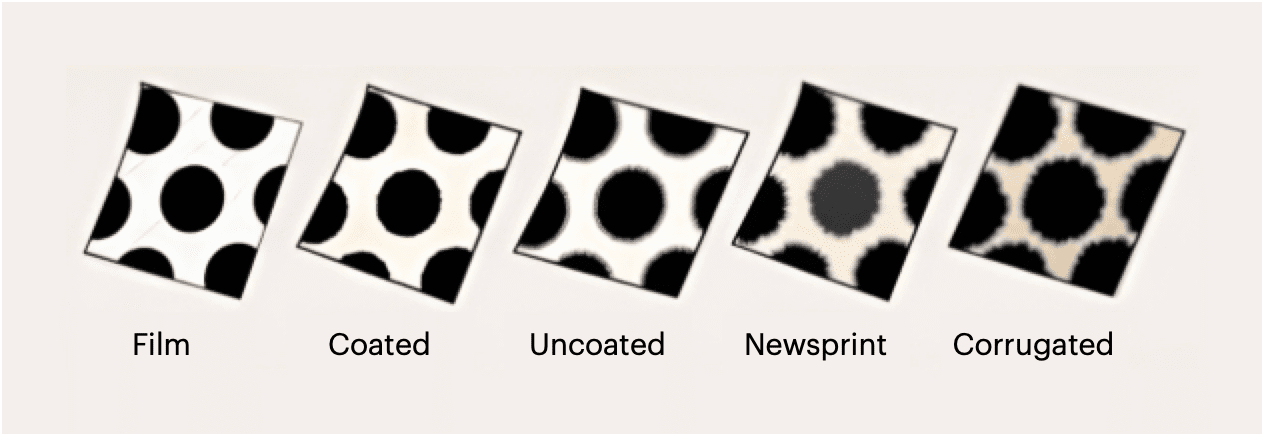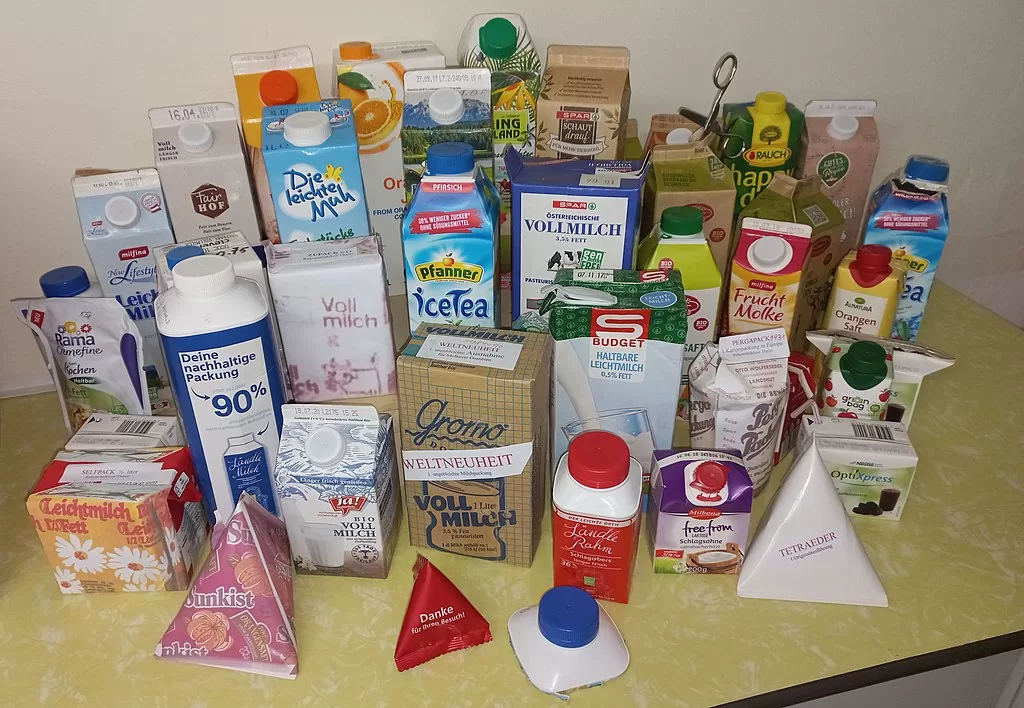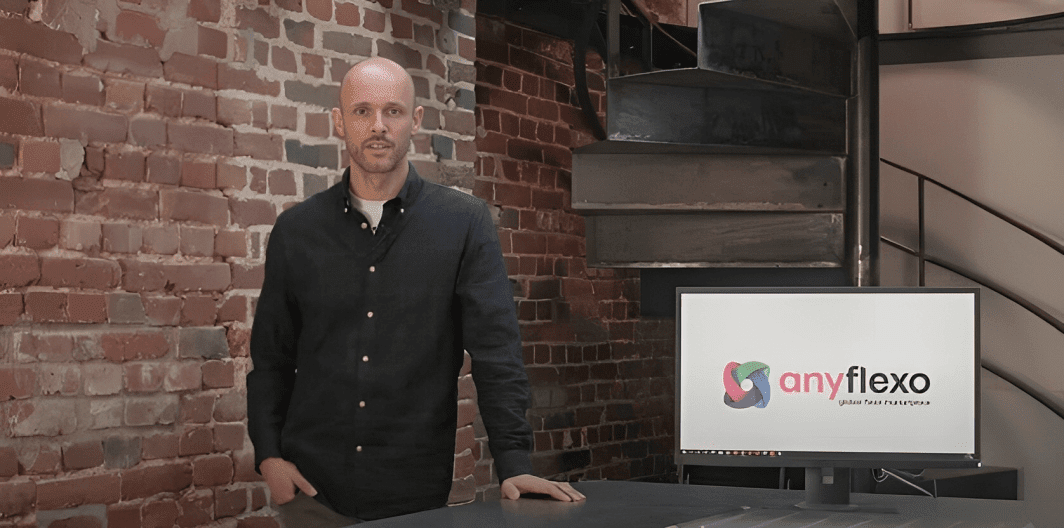In the flexo printing industry, the choice of substrate plays a key role in determining the quality and efficiency of the final product. Film substrates reign supreme, valued for their remarkable versatility and durability. Capable of high-speed printing, they offer exceptional print quality and a range of sustainable options that meet today’s push for environmental responsibility, making film an industry favourite. As a result, operators are often tasked with managing a number of variables to ensure impeccable quality of flexo printing on film substrates.
In this article, we take a closer look at some of the most common problems encountered when flexo printing on film, identifying possible causes and offering strategies for solving them.
1. Mottle or Uneven Ink Lay-down
Mottle, characterised by an uneven appearance of solid printed areas, is a prevalent challenge in flexo printing.
Causes
- The culprit may be an incorrect anilox cell volume, which fails to transfer the appropriate amount of ink.
- Inadequate ink viscosity or improper ink formulation can also contribute.
- Additionally, suboptimal tension control on the film substrate can result in mottle.
Measures
- Ensure the anilox roller is correctly specified for the job at hand.
- Adjust ink formulation and viscosity as needed.
- Optimise web tension through the press to maintain a consistent ink transfer.
2. Dot Gain or Ink Spread
Dot gain presents as the unwanted expansion of halftone dots, affecting detail and colour saturation.
Causes
- Excessive impression pressure between the plate and the substrate often leads to this.
- Ink that is too fluid or an overly high anilox line screen can make the situation worse.
Measures
- Calibrate impression pressure for the minimum amount required for ink transfer.
- Adjust ink viscosity and a compatible anilox line count for better control over dot gain.
3. Pin-Holing
Pin-holing occurs when small voids appear in areas of solid colour.
Causes
- Trapped air between the ink and substrate or poor wetting of the substrate.
- Specifically on film substrates, static electricity can attract dust, resulting in pinholes.
Measures
- Use of inks with better wetting properties.
- Installation of anti-static bars and improved substrate cleaning processes can significantly reduce occurrences of pin-holing.
4. Streaking or Banding
Streaking and banding appears as longitudinal and horizontal lines across the print.
Causes
- These issues often stem from an uneven application of ink due to damaged anilox rolls or variation in web tension.
Measures
- Regular inspection and maintenance of anilox rolls to ensure their integrity.
- Keeping web tension consistent and in the optimal range to avoid streaking.
5. Poor Ink Adhesion
Ink failing to adhere to the film substrate can lead to patchy prints or inks rubbing off.
Causes
- This can be due to a poor ink formulation or the substrate’s surface tension not being ideal for the ink used.
Measures
- Adjusting the formulation of the ink to increase its adhesion properties.
- Consider Corona treatment to increase the dyne level of the film for better ink adhesion.
6. Fading or Colour Shift
Print colours that appear to fade or shift from the intended hue can be problematic for brand consistency.
Causes
- It typically results from incorrect ink formulations or imbalanced drying, where certain ink components dry faster than others.
Measures
- Ensure accurate ink mixing and formulation.
- Properly configure drying units (be they infrared, UV or electron beam) to ensure even curing.
7. Film Substrate Wrinkling
Wrinkling or puckering of the film can cause distortions in the printing process.
Causes
- Excessive web tension or non-uniform tension can induce such issues.
- Additionally, different thermal expansion rates between the film and inks can also play a role.
Measures
- Precise tension control systems are essential to negate this issue.
- Apply tension uniformly and pay attention to temperature settings throughout the printing process.
8. Film Substrate Variants
The introduction of progressive film materials can pose fresh challenges in flexo printing.
Causes
- Innovative materials such as biodegradable and compostable films may react differently, exhibiting distinct optical thickness and surface energy characteristics, thus affecting wettability.
- Such variations can question the efficacy of established printing procedures.
Measures
- Conduct thorough research to understand how these new films interact under specific printing conditions.
- Adjust process parameters, like ink formulation and drying methods, to suit the unique requirements of these substrates for optimal print quality.
9. Barcode Inconsistencies
Barcodes demand precision; any deviation can render them un-scannable.
Causes
- Caused by dot gain, ink spread, or registration movement.
Measures
- Ensuring precise dot gain control and proper registration can mitigate such printing anomalies.
Flexo printing on film substrates should be approached with caution because of the potential problems. However, equipped with a careful approach to process control and troubleshooting, the flexo printers can triumph over these challenges. Understanding the unique properties of the substrate at hand and pairing it with the right anilox, plate and ink combinations is crucial. Through rigorous quality control and regular equipment maintenance, these common flaws can be identified and corrected early on, paving the way for high-quality, consistent flexo runs every time.

